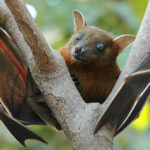 Mysteries
Mysteries  Mysteries
Mysteries  History
History 10 Surprising Stories About the Texas Rangers
 Humans
Humans 10 Philosophers Who Were Driven Mad by Their Own Theories
 Miscellaneous
Miscellaneous 10 Video-Game-Worthy Weapons and Armors from History
 Weird Stuff
Weird Stuff 10 Psychics Who Accurately Predicted Wartime Events
 The Arts
The Arts 10 Pieces of Art Inspired by a Broken Heart
 Health
Health 10 Science Fiction-Sounding New Medical Treatments
 History
History 10 Surprising Facts About the Father of Submarine Warfare
 Space
Space Ten Astonishing New Insights into Alien Worlds
 Weird Stuff
Weird Stuff 10 Bizarre Summer Solstice Rituals Still Practiced Today
 Mysteries
Mysteries Top 10 Haunting Facts About the Ghost Ship MV Alta
 History
History 10 Surprising Stories About the Texas Rangers
 Humans
Humans 10 Philosophers Who Were Driven Mad by Their Own Theories
Who's Behind Listverse?

Jamie Frater
Head Editor
Jamie founded Listverse due to an insatiable desire to share fascinating, obscure, and bizarre facts. He has been a guest speaker on numerous national radio and television stations and is a five time published author.
More About Us Miscellaneous
Miscellaneous 10 Video-Game-Worthy Weapons and Armors from History
 Weird Stuff
Weird Stuff 10 Psychics Who Accurately Predicted Wartime Events
 The Arts
The Arts 10 Pieces of Art Inspired by a Broken Heart
 Health
Health 10 Science Fiction-Sounding New Medical Treatments
 History
History 10 Surprising Facts About the Father of Submarine Warfare
 Space
Space Ten Astonishing New Insights into Alien Worlds
 Weird Stuff
Weird Stuff 10 Bizarre Summer Solstice Rituals Still Practiced Today
10 Ways Your Cat Is Weirder Than You Think
Cats already have a mysterious reputation. They slip around corners, disappear at night, and hold their thoughts close to their furry chests. However, recent studies revealed that cats are more unusual than we ever thought possible. From uncontrolled purring to cats that glow in the dark, here are ten of the most bizarre feline discoveries.
Related: Top 10 Exotic Pets You Can Buy (But Probably Shouldn’t)
10 Cats Have Hundreds of Facial Expressions
For a long time, it was believed that cats lacked any facial expressions beyond the basics, such as aggression, fear, or interest. But in 2022, a year-long study discovered that feline faces are exceptionally communicative. Cats have no less than 276 distinct expressions, a remarkable number when compared to humans (44 expressions) and dogs (27 expressions).
Interestingly, every feline expression combines three or four of 26 unique facial movements to produce the desired look. These movements include nose licks, pupils that dilate or constrict, whisker position, parted lips, blinking, different ear positions, and curled mouth corners.
This variety of “looks” disproves the common belief that cats are aloof. They show a lot of emotion. However, the researchers admit that it might take some time to decipher what all the expressions are supposed to communicate.[1]
9 Healthy Cats Act Sick
A few years ago, Ohio State’s Veterinary Medical Center was home to 12 healthy cats and 20 cats with interstitial cystitis (IC). This chronic disease makes cats vomit and urinate more frequently than normal, often outside of their litter box.
The cats were part of research projects related to understanding IC better, but then the researchers noticed something unexpected. When the animals’ routines stayed consistent and stress-free, the sick cats became healthier. When their routine was disrupted (like their usual caregiver went on vacation), the healthy cats displayed symptoms of IC, including vomiting, refusing food, and not using their litter box.
This research suggests that when healthy cats suddenly cough up hairballs or vomit, it’s not normal behavior as conventional wisdom might hold. The animal might be stressed by changes in its environment. It also offers hope that cats with IC aren’t doomed to chronic illness as previously believed. A consistent, stress-free routine can improve their symptoms.[2]
8 Cats Prefer Carbs over Protein
Felines are feisty hunters. Many owners have received “gifts” from their cats, including dead mice, frogs, and birds. One might be forgiven for thinking that cats are bonkers for protein. However, one study revealed a surprising craving that might change how pet food companies approach cat food.
During the experiment, Oregan State University’s College of Veterinary Medicine gave cats and dogs different food choices. The meals were prepared to be tasty but without any distracting flavors or aromas, allowing the animals to freely choose the food that their bodies wanted.
The dogs made a beeline for food with a high fat content. The cats, surprisingly, preferred carbs, especially the older animals. This dispels the common idea that felines only want and need a protein-heavy diet.[3]
7 Cats Have a Dominant Paw
Thought only humans were lefties or righties? Nope. According to a small study performed in 2018, cats also prefer to use one paw over the other.
The group of participating felines were allowed to stay at home with their owners, who were asked to observe their pets’ behavior in certain situations. They had to note whether a cat used their left or right paw to step out of their litterbox, start down a flight of stairs, and which paw they preferred to use first in other routine behaviors.
About 60 to 70% of the time, the cats showed a clear preference for one paw. Curiously, female cats were significantly more right-paw-dominant, while males favored their left paws.[4]
6 Cats Have Primordial Pouches
When a cat turns six months old, they develop a mysterious feature—the primordial pouch. It can easily be mistaken for a fat belly, but this pouch has nothing to do with obesity. In fact, all cats have one—male, female, thin, and overweight.
The pouch runs the entire length of a cat’s belly and consists of fat, skin, and fur. The purpose of the pouch is unknown, but its design suggests three possibilities. Being so stretchy, it could offer a cat extra flexibility and speed when needed. The fat layer and loose skin could protect the animals’s vital organs during a fight. The pouch might even serve as a fat storage area that provides cats with sustenance during times of hardship.
Interestingly, primordial pouches are very pronounced in some cats and almost invisible in others. It’s not unique to house cats, either. Big cats, like lions and tigers, also have them.[5]
5 The Mystery of Fetching Felines
When people play fetch with a pet, nearly every case involves a dog. Canines love to run after frisbees, balls, and sticks. But cats? When they hear the word “fetch” and see a toy fly through the sky, isn’t the only response a baleful stare at their owner? Not always.
Cats might never learn to fetch on command, but some animals initiate fetching games with humans. Why they do this is a complete mystery. To better understand the behavior, one study spoke with over 900 cat owners, and interestingly, the same patterns emerged.
As with most things that cats do, they call the shots. They decided when the game started, and none did so because they were trained to play fetch. The felines brought an item to their human simply because they felt like a game. In fact, many owners said that the cats trained them to play fetch![6]
4 Cats Cannot Taste Sugar
Many feline owners share ice cream or pudding with their “sweet-toothed” cat. But these animals are not after the sweetness—they are likely drawn to the fat content in such products, something they can taste very well.
A person has about 9,000 taste buds on their tongue. A cat’s taste buds number a dismal 470. However, they might still taste certain flavors better than people due to an unusual ability to use their superior sense of smell to enhance taste. But when it comes to sugar, cats lose this round.
It all comes down to genes. The receptor that detects sweetness relies on two genes, Tas1r2 and Tas1r3, to work together and produce proteins that allow the tongue to taste sugar. In humans, both genes are active. But in cats, Tas1r2 is a pseudogene. The latter is a piece of DNA that resembles a certain gene, but it cannot generate proteins. As a result, felines—even lions and tigers—have no idea what sugar tastes like. Bummer![7]
3 Purring Is Involuntary
Pet owners already know that cats purr when they are content. But scientists wanted to look under the hood and find out how cats create their iconic throat rumble. For the longest time, they couldn’t figure it out.
In previous studies, squishy pads were discovered in feline throats, but nobody knew what to make of them. But in 2023, a study not only found that these pads were involved in purring, but they also revealed an unexpected twist. Cats might not purr willfully.
Using deceased cats, scientists directed air through the pads, and (a little freakishly) the dead animals purred. This showed that cats don’t need conscious muscle contractions to make the sound. After blowing that popular theory out of the water, the question remains. What’s going on? The process isn’t fully understood, but it’s believed that when a cat is happy, the brain triggers an aerodynamic response (purring) that continues on autopilot.[8]
2 Cats Glow under UV Light
Scientists have long known that some animals fluoresce under ultraviolet light. This menagerie includes insects, fish, reptiles, and birds. But little was known about how UV light might affect mammals.
In 2023, a new study threw some light on the subject. As it turns out, mammals fluoresce like they’re being paid—including the humble domestic cat. In fact, it was so common that all 125 mammal species that were UV-light tested glowed to various degrees.
Mammals can fluoresce in yellow, red, green, blue, and pink. Glowing compounds show up in their fur, skin, claws, teeth, and even their bones. Animals that glow the brightest tend to have white or lighter-colored fur.
It’s unclear if fluorescence offers mammals any biological advantages or whether the light show is a happy accident. All researchers understand for certain is that the glow results from surface chemistry. More precisely, compounds like proteins absorb light before emitting it back out into the world at a lower-energy wavelength.[9]
1 They Like Invisible Boxes Too
Cats cannot resist two things—catnip and boxes. The latter is an endearing trait. Many owners have found their “missing” pet hiding in a cardboard container or watched their cat amuse themselves for hours inside a box. Building on this, researchers posed a bizarre question. Would a cat hunker down in a box that doesn’t exist?
To create the illusion of a box, the study relied on Kanizsa squares. These dots have a quarter removed, making them resemble an open-mouthed Pacman. When four are placed in a square formation with the gaps facing inward, a viewer can “see” a square that isn’t there.
The scientists roped in cat owners who placed Kanizsa squares in their homes. The goal was to see if their cats would perceive the two-dimensional outline of a square and sit in the “invisible” box. The owners also had to place a second Kanizsa arrangement nearby that didn’t form a square. Remarkably, the cats more frequently sat in the Kanizsa squares that formed the illusion of a box than the one that did not.[10]








